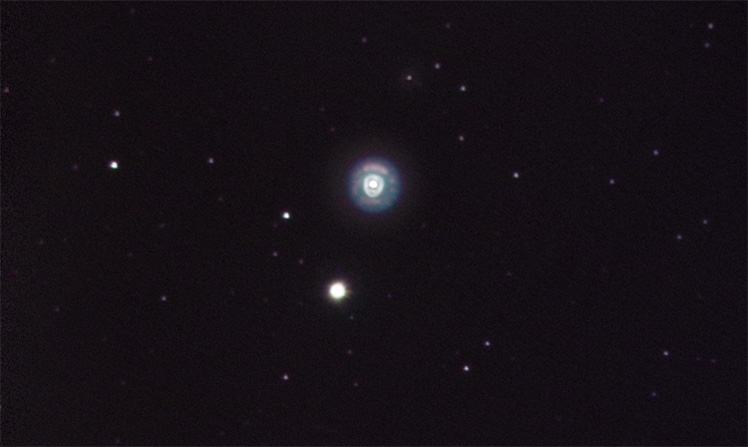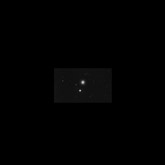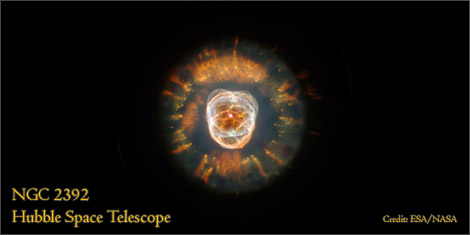In November 1999 the Hubble Space Telescope suddenly stopped working. Another gyroscope had failed, leaving the telescope with only two working ones—without at least three working gyroscopes, the telescope lost its bearings, unable to tell which way it was pointing.
Fortunately, only a few weeks later, a Space Shuttle orbiter rendezvoused with Hubble and four astronauts repaired the multi-billion dollar telescope in a series of spacewalks. To test out the newly repaired observatory, scientists on Earth commanded it to point to a target and take some pictures. The result was magnificent—the telescope had been fully repaired. And the target that Hubble captured, a bright planetary nebula known as the Eskimo Nebula, was revealed in all its glory.
My shot of the Eskimo Nebula (or NGC 2392) is of course far inferior to Hubble's. Nevertheless, there is something very satisfying in capturing the same object. You don't need a ten billion dollar space program to enjoy the night sky. All you need is some modest equipment, a little luck, and a lot of patience.
Imaging Notes
Compared to most galaxies and faint nebulae, the Eskimo Nebula is relatively bright. But to get the detail that you want, you will need to gain as much resolution as you can. If you have excellent tracking, magnify the image to the limit of your aperture. If your tracking is not so good, trade off exposure length to gain sharpness.
There is a wealth of detail in NGC 2392. In the outer shell (the "parka"), notice that some patches are brighter than others. Make sure you can distinguish this detail in your image. The greater the resolution of your image, the more detail you will see in these patches.
The inner shell (the "face") is more challenging. At lower resolutions, the central star blows out most of the detail. With better resolution you might be able to see some fine filaments in the inner shell.
The outer shell is mostly teal in color (the same teal seen in the Dumbbell Nebula and other planetaries). The brighter patches in the outer shell are more purple. The inner shell is blueish-white (as is the central star).
Note that Hubble's shot of the Eskimo is rendered in false color. Hubble images show particular frequencies of light (such as the frequency given off by ionized hydrogen) in specific colors (to help scientists see the composition of the object). My shot is shown in natural color.


